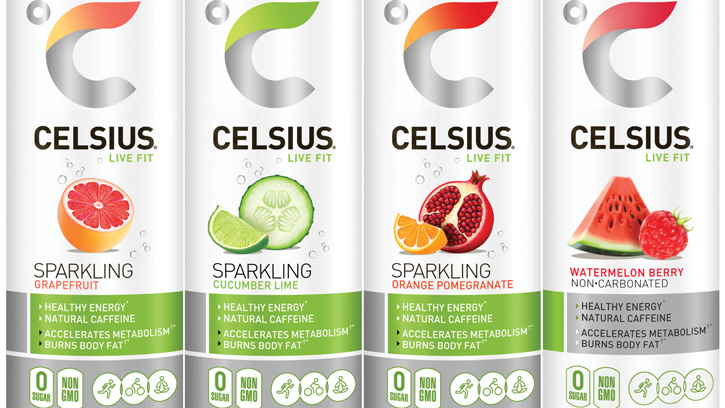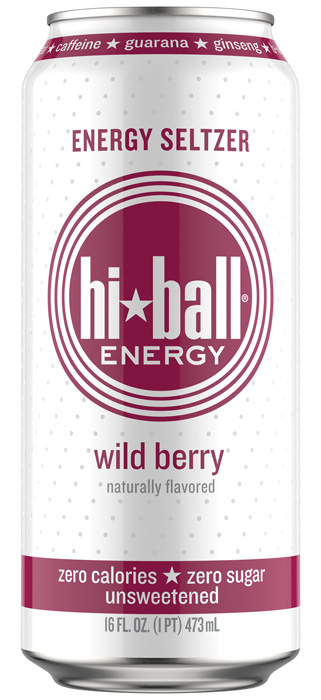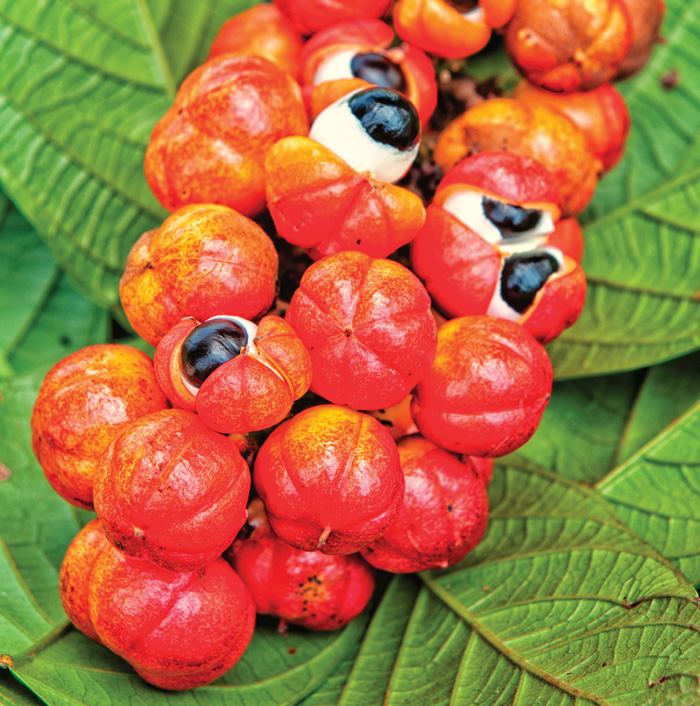Fueling Clean Energy
NUTRACEUTICALS
The caffeine craze is a trend to watch in 2021, according to research from the International Food Information Council (IFIC). “Americans in 2020 have had to juggle competing priorities and take on new roles and responsibilities. For many of us, it appears that the frenetic pace is increasingly powered by caffeine,” the research states.
According to IFIC, nearly three in 10 respondents (28%) in December 2020 said they were consuming more caffeinated beverages than they did the previous January. Parents of children under age 18 appear to be among those most in need of an energy boost; 67% of parents with children under age 18 said that they consume caffeine in multiple ways versus 55% of adults without young children. IFIC forecasts that bedraggled Americans will continue to turn to caffeine for help with their tasks and to-do lists.
In their quest for caffeine, many consumers are seeking out energy drinks. The market for energy drinks in the United States was valued at $16.3 billion in 2018 and is predicted to grow to $20.5 billion by 2022, according to Innova Market Insights.
“Innovation is being driven by clean labels, low and light options, functional health benefits (besides energy/alertness), and hybrid products (tea/energy drink blends),” says Lu Ann Williams, global insights director, Innova Market Insights. She also notes that there has been a growing movement toward clean label energy drinks, which use natural sources of energy such as yerba maté extract, guayusa leaf, green tea extract, or green coffee extract.
Here is a look at some of the ingredients that product formulators are using in energy drinks to deliver clean energy benefits.
Nature’s Caffeine
“The energy drink market has undergone a major revamp in just the last five years,” observes Rikka Cornelia, product manager, Martin Bauer Group, a global manufacturer and provider of teas and botanicals. One approach involves using differing formats, specifically beverage category hybrids. “This fusing can be due to complementary functions (i.e., Bolt24 Energize, an energy/sports drink), trendiness (i.e., Celsius, a sparkling energy drink), or simply differentiation (i.e., Coca-Cola Energy, an energy soda),” says Cornelia.
Guarana, tea, and yerba maté are the most in-demand natural sources of caffeine in energy drinks, while coffeeberry and guayusa are up-and-coming, says Cornelia. Not only are these ingredients natural sources of caffeine, but some also provide additional antioxidant benefits.
• Coffee bean extract. It’s only natural that coffee bean extracts are a popular ingredient in a number of energy drinks, providing a natural, clean label source of caffeine. Van Drunen Farms, for example, offers Coffeeberry Energy and Coffeeberry Caffeine. Coffeeberry Energy is a patented whole coffee fruit extract that delivers caffeine and polyphenols from the entire coffee fruit (70% natural caffeine, 5% antioxidant polyphenols). Coffeeberry Caffeine is a highly concentrated pure green coffee bean extract, offering 98% natural caffeine.
Applied Food Sciences also offers a green coffee bean extract with antioxidants, Java.g Antioxidant Energy. It is standardized for chlorogenic acids and naturally occurring caffeine content (40% caffeine, 45% chlorogenic acids, 60% total polyphenols).
• Guarana. This climbing plant, native to the Amazon, has seeds that contain approximately four times the amount of caffeine found in coffee beans. The mix of other natural chemicals contained in guarana seeds is thought to heighten the stimulant effects of guarana over caffeine alone (Moustakas et al. 2015). Celsius, a dietary supplement energy beverage, includes guarana sourced from the plant’s seeds as one of its ingredients for energy.
• Guayusa. Like guarana, guayusa is native to the Amazon region. Not only is it a natural source of caffeine, guayusa is also a source of antioxidants. Chlorogenic acid, some flavonols, and carotenoids have been identified in guayusa (Garcia-Ruiz et al. 2017).
• Yerba maté. This herbal tea is made from the leaves and twigs of the Ilex paraguariensis plant. In addition to caffeine, yerba maté also contains polyphenols and saponins, contributing to its antioxidant and anti-inflammatory properties.
Probiotics
Probiotics are most commonly associated with gut and immune health and are mainstream, label-friendly ingredients. Recent research has shown that certain probiotics may influence energy levels. Marttinen et al. (2020), for example, said that emerging evidence has shown an association between the intestinal microbiota composition and physical activity, suggesting that modifications in the gut microbiota composition may contribute to physical performance. In their review, the authors provided an overview of the existing studies that have examined the interactions between physical activity and gut microbiota, and evaluated the clinical evidence that supports the effects of probiotics on physical performance, post-exercise recovery, and cognitive outcomes among athletes.
A study with a probiotic derived from Taiwanese pickled cabbage suggested that it had the potential to be an ergogenic aid to improve aerobic endurance performance (Huang et al. 2019). TWK10 is a Lactobacillus plantarum strain isolated from Taiwanese pickled cabbage and launched by Lonza in September 2020. Licensed exclusively from Synbiotech for North America and Europe, the clean label, vegan ingredient is scientifically proven to effectively modulate gut microbiota for sports endurance and performance benefits.
In the study, a total of 54 healthy participants, aged 20–30, without professional athletic training (27 men and 27 women) were enrolled and randomly allocated to the placebo, low-dose (3 × 1010 colony forming units [CFU]), and high-dose (9 × 1010 CFU) TWK10 administration groups. The results showed that TWK10 significantly elevated the exercise performance in a dose-dependent manner and improved the fatigue-associated features correlated with better physiological adaptation. The change in body composition shifted in the healthy direction for TWK10 administration groups, especially for the high-dose group, which showed that body fat significantly decreased and muscle mass significantly increased.
Alternative Sugars
“Label claims such as low calorie, organic, and sugar-free are much more frequent in the energy drink aisle compared to just five years ago. Again, this plays into the trends of clean label and healthy,” says Cornelia of Martin Bauer Group. Alternative sugars that are lower in calories and provide additional benefits, like being slowly digested, are useful in energy drinks.
• Isomaltulose. Isomaltulose delivers balanced and sustained energy from carbohydrates, without the typical “sugar crash” performance slump. Because of its unique binding, it provides the same amount of carbohydrate energy as sucrose, but the energy is released more slowly. BENEO offers Palatinose (generic name isomaltulose), which is completely yet gradually broken down throughout the entire small intestine. Thus, glucose enters the blood more slowly, blood sugar levels remain low, and the body is supplied with sustained energy. Palatinose is purely based on sucrose from sugar beet and is generated through enzymatic rearrangement of the glycosidic bond between glucose and fructose from an alpha-1,2 linkage in sucrose to an alpha-1,6-glycosidic bond in Palatinose. The new molecular linkage is more stable compared with that of sucrose. König et al. (2016) demonstrated that a pre-load of Palatinose in endurance athletes maintained a more stable glucose profile and higher fat oxidation, which resulted in improved cycling performance compared with maltodextrin.
• Ribose. A unique carbohydrate, ribose is used in products like X2 Endurance Natural Energy Drink. Its maker claims that this energy beverage, which includes ribose, honey, and cane sugar, as well as caffeine from green tea, delivers sustained energy with no crash or jitters. Green tea provides 114 mg of natural caffeine in the formulation.
Bioenergy Ribose is a unique 5-carbon carbohydrate that works by regulating the body’s natural energy synthesis. Ribose is the backbone of ATP, the source for cellular energy. It drives the process that replenishes ATP and other energy components in cells, helping muscles regenerate lost energy and reducing muscle soreness. Past studies have shown that Bioenergy Ribose can improve endurance during strenuous exercise, shorten recovery time, and reduce fatigue in people suffering from energy depletion.
The energy market holds potential for continuing innovation outside clean energy. Williams of Innova Market Insights notes that cross-category new product development trends evident throughout the soft drink segment are also influencing the development of new energy and sports drinks. Products that offer physical and/or mental boosting qualities are linking with drinks such as plant-based waters, carbonates, and coffee beverages. In addition, she says complete sports/energy drink solutions are gaining attention as consumers look for products that meet both their physical and mental needs.
REFERENCES
Garcia-Ruiz, A., N. Baenas, A. M. Benitez-Gonzalez, et al. 2017. “Guayusa (Ilex guayusa L.) New Tea: Phenolic and Carotenoid Composition and Antioxidant Capacity.” J. Sci. Food Agric. 97(12): 3929–3936.
Huang, W.-C., M.-C. Lee, C.-C. Lee, et al. 2019. “Effect of Lactobacillus plantarum TWK10 on Exercise Physiological Adaptation, Performance, and Body Composition in Healthy Humans.” Nutrients 11(11): 2836.
IFIC. 2021. “Food Trends to Watch in 2021.” Press release, Jan. 6. International Food Information Council, Washington, D.C. ific.org.
König, D., D. Zdzieblik, A. Holz, et al. 2016. “Substrate Utilization and Cycling Performance Following Palatinose Ingestion: A Randomized, Double-Blind, Controlled Trial,” Nutrients 8(7): 390.
Marttinen, M., R. Ala-Jaakkola, A. Laitila, et al. 2020. “Gut Microbiota, Probiotics and Physical Performance in Athletes and Physically Active Individuals.” Nutrients 12(10): 2936.
Moustakas, D., M. Mezzio, B. R. Rodriguez, et al. 2015. “Guarana Provides Additional Stimulation over Caffeine Alone in the Planarian Model.” PLos One 10(4): e0123310.








